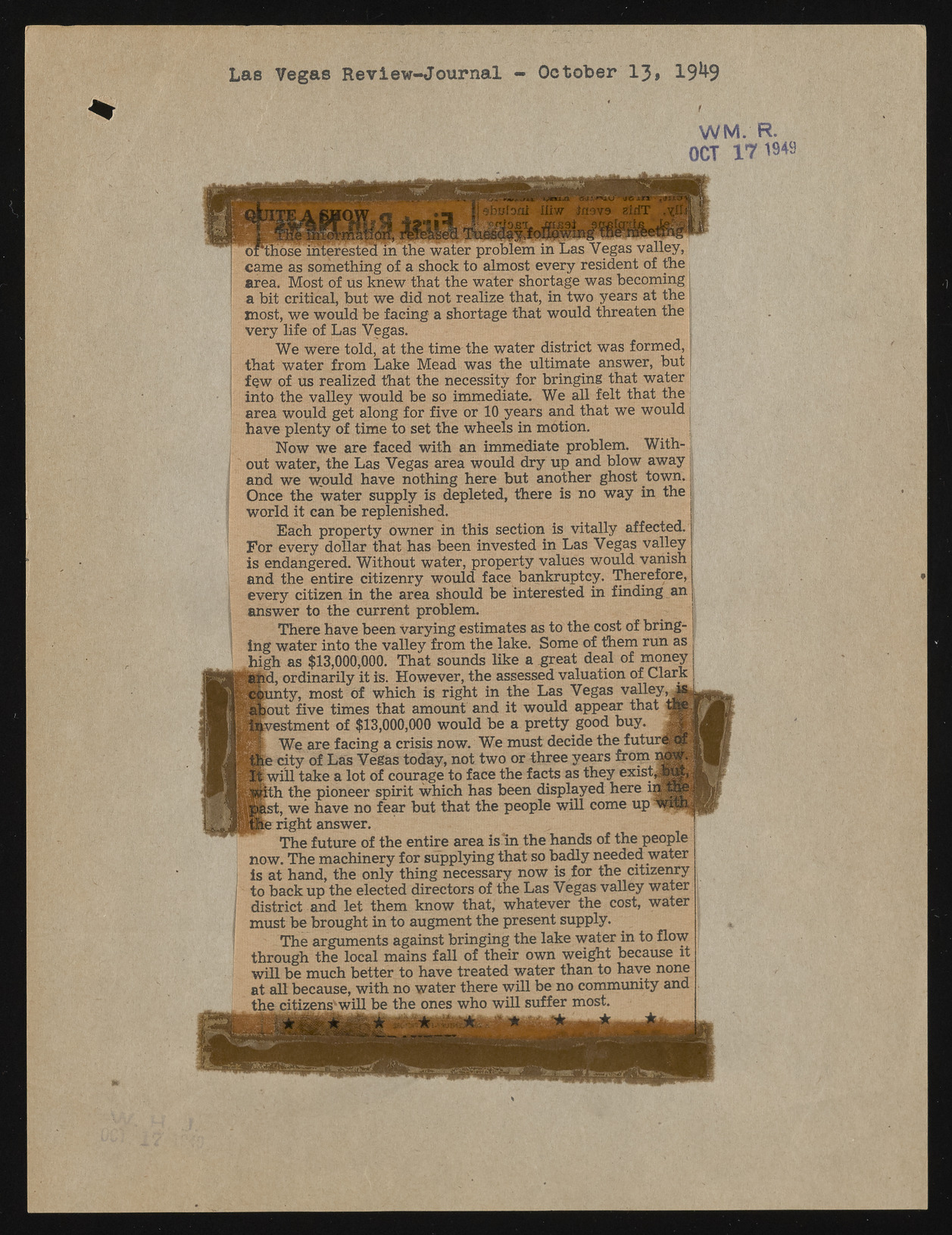Copyright & Fair-use Agreement
UNLV Special Collections provides copies of materials to facilitate private study, scholarship, or research. Material not in the public domain may be used according to fair use of copyrighted materials as defined by copyright law. Please cite us.
Please note that UNLV may not own the copyright to these materials and cannot provide permission to publish or distribute materials when UNLV is not the copyright holder. The user is solely responsible for determining the copyright status of materials and obtaining permission to use material from the copyright holder and for determining whether any permissions relating to any other rights are necessary for the intended use, and for obtaining all required permissions beyond that allowed by fair use.
Read more about our reproduction and use policy.
I agree.Information
Digital ID
Permalink
Details
More Info
Rights
Digital Provenance
Publisher
Transcription
Las Vegas Review-Journal - October 13» 19^9 W M . R . OCT 17 1949 ^ r a i ^ mferesteTmThe water problem in Las Vegas valley came as something of a shock to almost every resident of the area. Most of us knew that the water shortage was becoming a bit critical, but we did not realize that, in two years at the most, we would be facing a shortage that would threaten the very life of Las Vegas. We were told, at the time the water district was formed, that water from Lake Mead was the ultimate answer, but few of us realized that the necessity for bringing that water into the valley would be so immediate. We all felt that the area would get along for five or 10 years and that we would have plenty of time to set the wheels in motion. Now we are faced with an immediate problem. Without water, the Las Vegas area would dry up and blow away and we would have nothing here but another ghost town. Once the water supply is depleted, there is no way in the world it can be replenished. Each property owner in this section is vitally affected. For every dollar that has been invested in Las Vegas valley is endangered. Without water, property values would vanish and the entire citizenry would face bankruptcy. Therefore, every citizen in the area should be interested in finding an answer to the current problem. There have been varying estimates as to the cost of bringing water into the valley from the lake. Some of them run as high as $13,000,000. That sounds like a great deal of money a|id, ordinarily it is. However, the assessed valuation of Clark county, most of which is right in the Las Vegas valley, j o lab out five times that amount and it would appear that jjjttvestment of $13,000,000 would be a pretty good buy. | We are facing a crisis now. We must decide the futur^M ^ the city of Las Vegas today, not two or three years froin n« p | If w ill take a lot of courage to face the facts as they exist $wth the pioneer spirit which has been displayed here mSRBf pst, we have no fear but that the people w ill come up with e right answer. The future of the entire area is in the hands of the people now. The machinery for supplying that so badly needed water is at hand, the only thing necessary now is for the citizenry to back up the elected directors of the Las Vegas valley water district and let them know that, whatever the cost, water must be brought in to augment the present supply. The arguments against bringing the lake water in to flow through the local mains fall of their own weight because it w ill be much better to have treated water than to have none at all because, with no water there will be no community and the citizens' will be the ones who w ill suffer most. i ?' i ii iH r t mmr tmifriiiM iiif m fri

